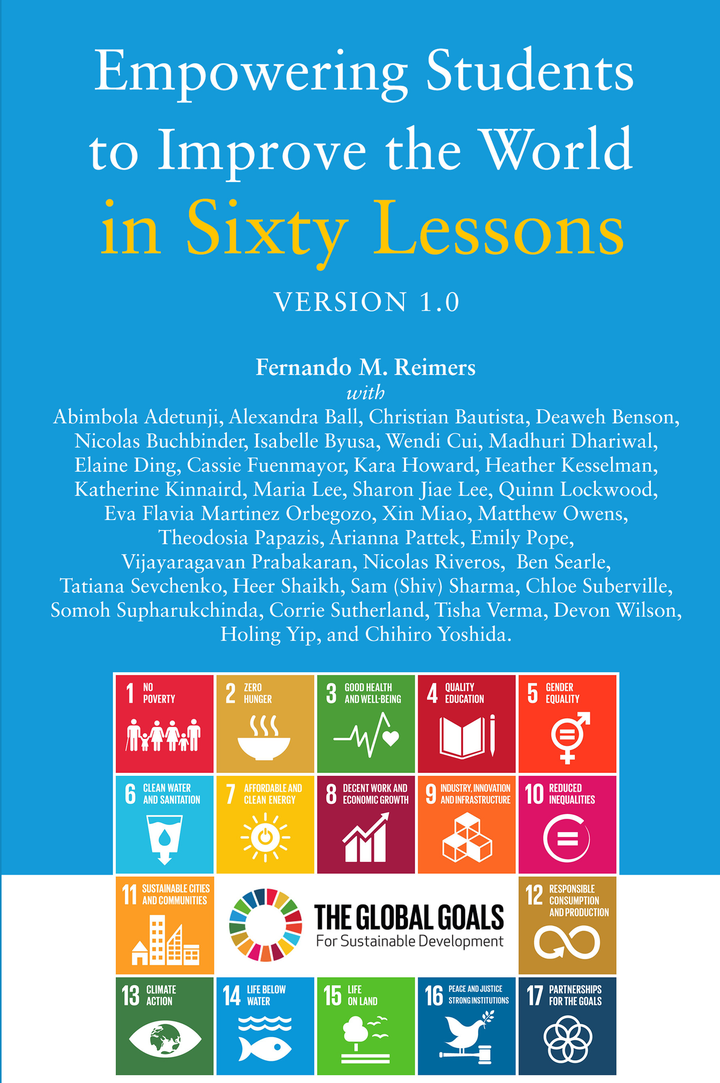Globalization, requires a new emphasis on global citizenship education. This means helping students understand and appreciate human rights and shared global challenges thus becoming engaged citizens. To do this well, purposeful and high quality global citizenship curriculum is essential. To be able to ‘create space’ for new curriculum, and to support it, schools must develop and implement an intentional strategy of global citizenship education. In partnership with some of my graduate students at Harvard I have just published a book designed to assist students, teachers and school leaders in the process of creating and teaching global citizenship curriculum.
The book Empowering Students to Improve the World in Sixty Lessons offers three tools. The first is a protocol to design and adapt global citizenship curriculum. The second is a protocol to design a school wide strategy for global education. The third is an actual curriculum prototype, a sixty lesson global citizenship curriculum, developed following the process presented in the book.
The book is addressed primarily to teachers and school and district leaders, interested in creating opportunities for their students to understand the world in which they live, and to learn to improve it. It can also be useful directly to students in elementary and secondary education who may, in some cases, take the initiative to themselves create curriculum or partner with their teachers in creating opportunities for them to learn about globalization in their schools. Parents and others who can support schools in becoming more relevant may also find the book helpful.
One of the steps in the thirteen steps process proposed in the book involves the development of a prototype, such as a global studies curriculum, much like the 60 lessons presented in the book. Developing such a curriculum is within the reach of most schools. Having a concrete prototype makes it possible to obtain feedback, to have clarity among many different people about what we mean when we say global citizenship education, to try it and to learn from it. I shared this curriculum with a group of highly recognized teachers from several different countries and their views on the potential utility of the curriculum served as a point of validation.
Our aim in developing this curriculum was to design something that would be simple and within the reach of a wide range of schools, working in a variety of conditions and with varying levels of resources and support. The curriculum requires only teaching five lessons in each grade, a task within the reach of most schools. In spite of such simplicity, the curriculum is a rigorous and robust sequence aligned to a clear set of learning outcomes, which are in turn aligned to an ambitious vision to improve the world. The curriculum is aligned to a map of global competencies that characterizes a high school graduate who understands globalization and appreciates the opportunities it offers for people to collaborate, across lines of difference, in improving the communities of which they are a part, from local communities to global communities. These competencies are, in turn, aligned with the Sustainable Development Goals, a compact of seventeen targets intended to create a world which is sustainable and where peace can be lasting.
I had three goals in leading this group of students in developing the curriculum:
The first goal was to serve a pressing need for high quality instructional materials which can help K-12 teachers educate for global citizenship.
The second goal was to prototype an approach to develop global citizenship curriculum which would be widely accessible, replicable and scalable.
The third goal was to collaborate with my students as part of their education.
The task of educating students to understand and improve the world in which they live, collaborating with others along multiple lines of difference, has never been more urgent. My hope is that Empowering Students to Improve the World in Sixty Lessons will be valuable to those who understand that urgency, so they can bring others along in educating students so we can sustain Peace.

